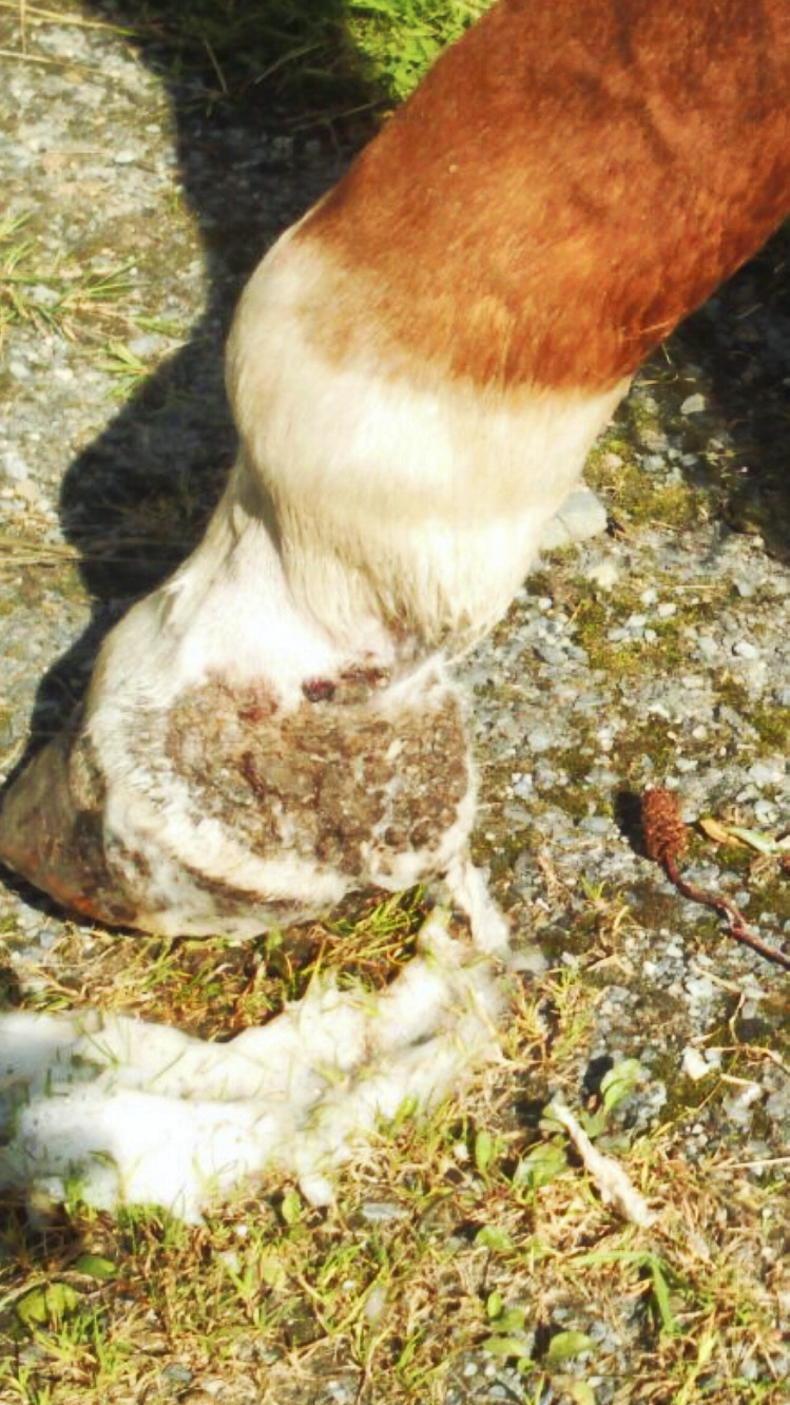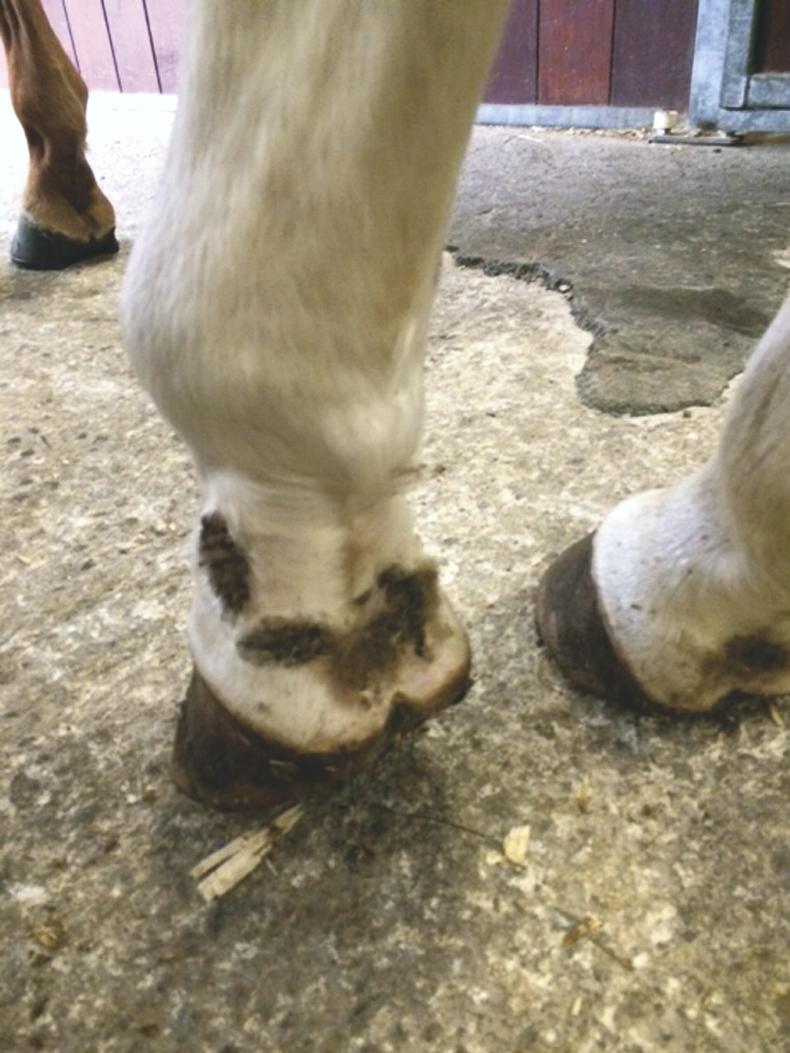MUD fever, which is often referred to as cracked heels or mud rash, is a common but painful condition found on horses’ legs, where the skin becomes inflamed and scabby. Sometimes the leg may ooze a yellowish fluid and the pastern, coronet and heels of the foot may become cracked.
Mud fever is typically found in the back legs of horses, though any leg can be affected. White legs (pink skinned) are more prone to mud fever than darker coloured legs. In severe cases, the horses’ leg can swell and cause lameness.
What causes mud fever?
There are many causes of mud fever, the most common being exposure to damp conditions for a prolonged period of time, for example, standing in soiled bedding or in deep mud. Frequent washing of your horse’s legs without fully drying them afterwards can also cause cracked heels. These wet conditions give bacteria a perfect environment to grow in.
If your horse’s skin is generally unhealthy this can also result in the development of mud fever, often due to a poor immune system or some other underlying issue. Horses with very hairy legs can be rather prone to mud fever as their legs tend to be washed more frequently. It is also very difficult to get the heels completely dry after washing. Mud can become trapped in the horse’s hair more easily.
Prevention
Here are some steps you can take to reduce the chance of your horse developing mud fever:
The most important measure is to be attentive. Keep a very close eye on your horse’s heels. The sooner you spot the signs of mud fever, the quicker you can treat the problem and avoid a lengthy recovery.
Treatment
There are many different tips and tricks for treating mud fever and they really depend on the severity of the case. The scabs can be softened and removed carefully and gently using warm water and a clean sponge. Gently remove the scabs in a downward motion to avoid pulling against your horse’s hair. Once the scabs are removed, wash the area with a small amount of medicated shampoo or veterinary cleanser. Rinse and dry well.
Once this is done, there are many topical creams and products on the market to treat the skin. Soothing anti-bacterial and anti-fungal creams are key. If turning out remember to apply a barrier cream.
In severe cases, your horse may need systemic antibiotics. In this situation you will need to consult your vet.


 This is a subscriber-only article
This is a subscriber-only article
 It looks like you're browsing in private mode
It looks like you're browsing in private mode










SHARING OPTIONS: